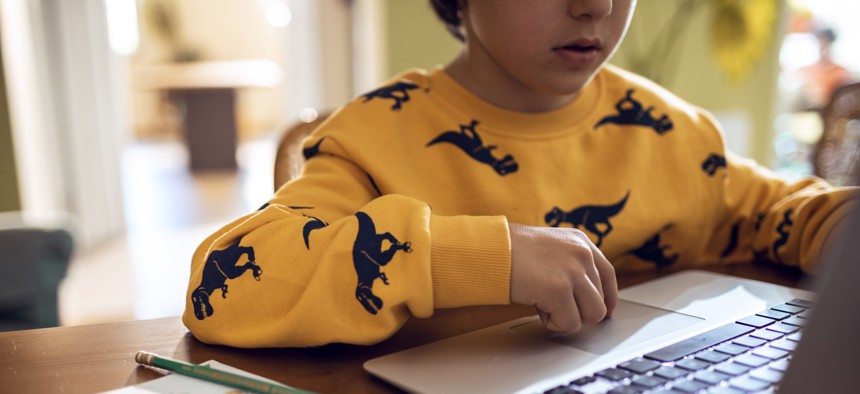New report finds low-income Black and Latinx households most affected by the digital divide
The Community Service Society study includes recommendations for legislators to help close the gap

Remote Learning during the digital divide Marko Geber
A new study by The Community Service Society of New York finds that New Yorkers of color are disproportionately impacted by the digital divide, as they are unable to afford internet access, lack internet access at home, and have too few digital devices to work off of. . The CSS report titled, “Disconnected: The Digital Divide & Disrupted Schooling in NYC” and part of the “Whose Recovery? Addressing the Needs of Low-Income New Yorkers” series, examines how the digital divide is impacting New Yorkers, particularly students, and proposes multiple recommendations to close the gap.
Results from CSS’ 2021 survey, Unheard Third, compares the impact of unequal access to quality internet services, coined the “digital divide,” across income, race, geography, and education levels,
According to the survey, 22% of low-income New Yorkers said they lacked internet access at home, which is double the percentage of those with moderate to high income.
Of the share of low-income New Yorkers, Black and Latinx New Yorkers reported higher percentages of challenges with internet affordability, access to internet and having enough digital devices in the home. For example, 22% and 29% of Black and Latinx households do not have enough digital devices compared to 19% and 21% in Asian and white households.
“Our policy briefs are always geared towards uplifting issues faced by low-income New Yorkers and supporting equitable policy solutions to those issues,” said Patrick Joseph, a policy analyst at CSS. “In this case, our survey data painted a clear picture of how difficult life became for many low-income New Yorkers who had limited internet access during the pandemic.”
The report also finds communities in the Bronx had the largest impact, with 24% of respondents lacking internet access and 25% lacking digital devices in the home.
NYCHA residents are also impacted disproportionately, with 31% of public housing residents reporting a lack of internet access in their homes and double the number of residents in the Bronx reporting decreased quality of internet service compared to neighboring Queens and Brooklyn residents. New York City Council Member Julie Menin started a reduced cost broadband program within two NYCHA buildings in her district that combined with a federal subsidy is essentially free to tenants who qualify and is looking to expand it into other public housing across the city. Mayor Eric Adams more recently announced the start of a pilot program to bring internet and basic cable TV to some 300,000 NYCHA tenants at 200 public housing buildings, while he has paused the city’s Internet Master Plan.
With the digital divide affecting low-income New Yorkers of color the most, alongside NYCHA and Bronx residents, the report makes recommendations targeting these populations. The recommendations include: piloting municipal broadband in the Bronx, providing NYCHA residents with free internet access, ensuring all public school students have access to high speed internet and devices, and creating legislation to collect data on the feasibility of municipal broadband across New York State.
“We hope this report adds to the public discourse on the necessity of internet access in modern life and pushes city officials to not just recognize this fact, but to legislate on it. We need free municipal internet in New York if we want to ensure that everyone has access to the same opportunities,” said Joseph.
